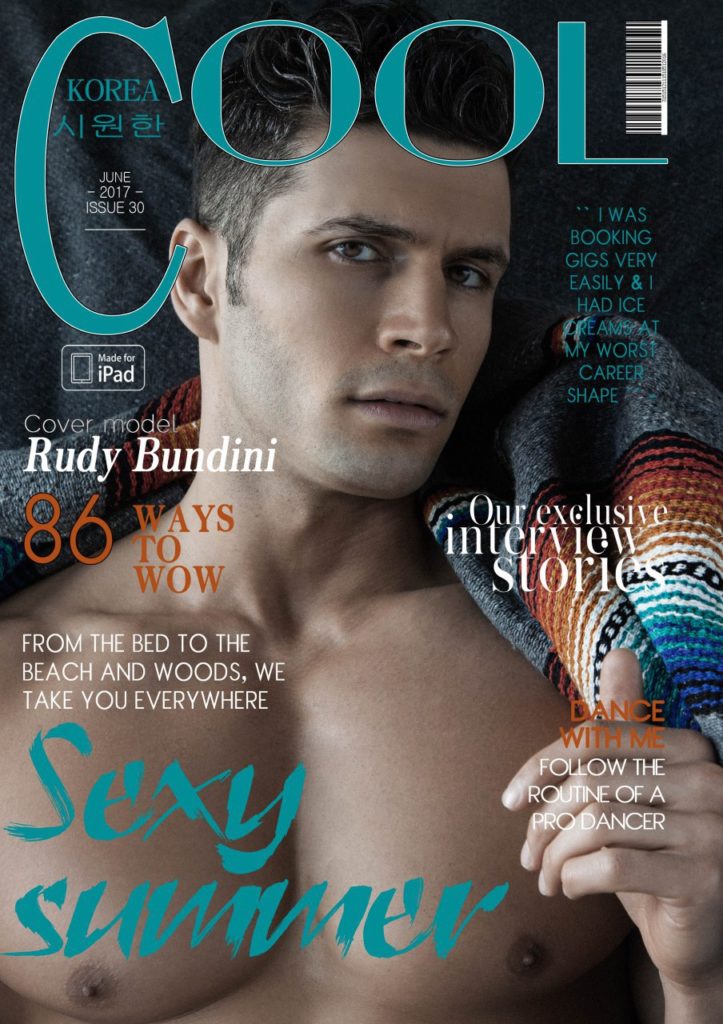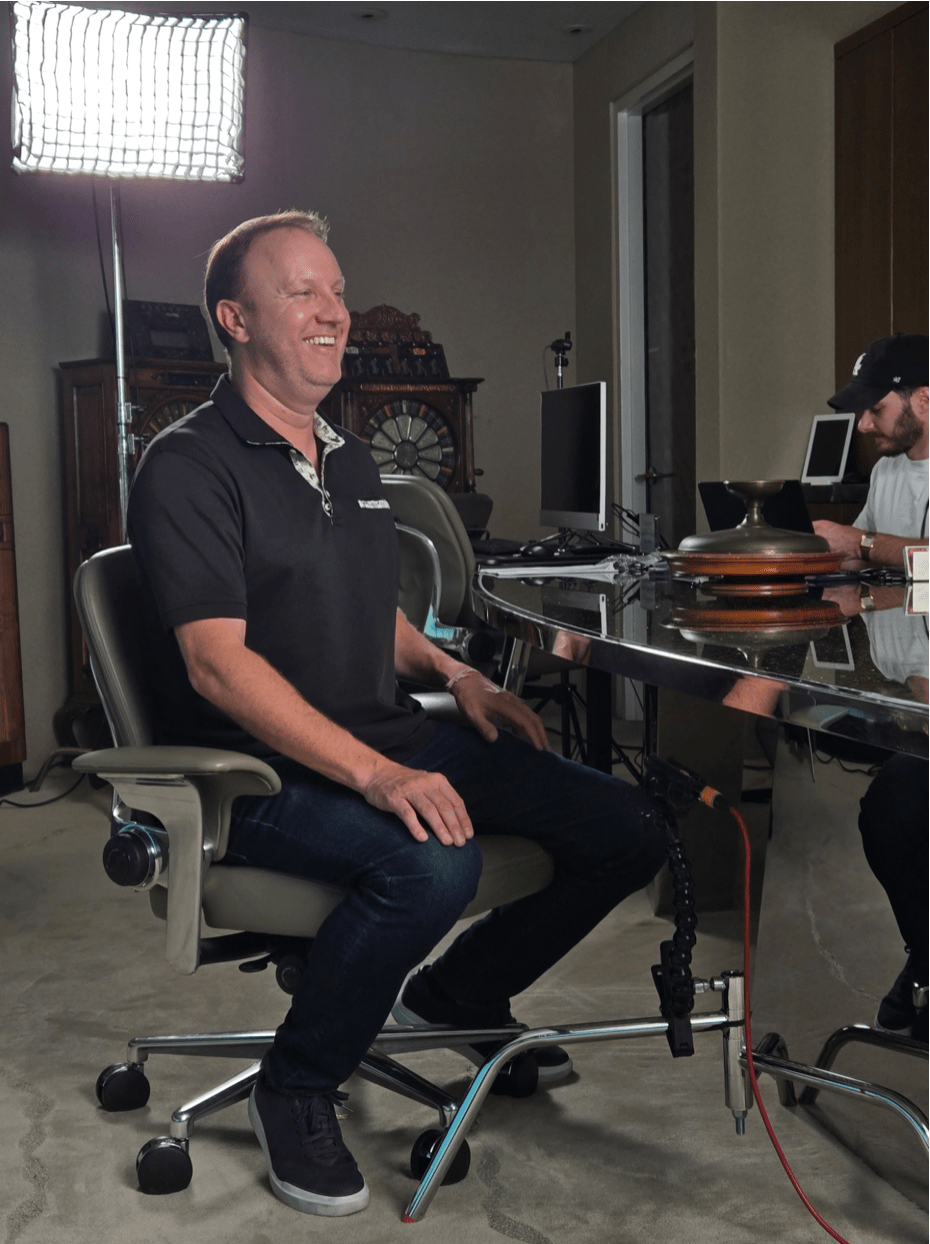Entertainment
How to Break into the Male Modeling Industry: Advice from Super Model RUDY BUNDINI

Today we break into the fashion and commercial world of high-end male modeling. Who else to analyze it than someone with years of experience in the field, super model RUDY BUNDINI? Years ago when he first started his career, nobody could imagine that he would turn into one of the most recognizable faces in the fashion and commercial world. Today he has become one of the most well-known faces in the modeling industry.
Male modeling is a unique career choice in that there is no specific path to success. Many men try and fail while others are able to land short-term work without the ability to earn consistent and stable long-term wages. However, one male model has been able to stand out above the rest. Rudy Bundini has been able to remain successful in the industry and earn illustrious recognition for his work from Asia to New York to Dubai. Rudy was kind enough to sit down with us from his busy schedule to shed some light into why certain male models succeed while others are replaced.
If you’ve never heard of Rudy before, you have probably seen his work. He has graced the ad campaigns of designers and companies including Philipp Plein, Nike, Versace and Roger Dubois. His Instagram account boasts over a million followers and is filled with professional pictures of his perfect godlike physique and chiseled jawline. Although there are always newer and fresher faces breaking into the male modeling industry on a daily basis, Rudy has been able to maintain steady and consistent success through his hard work, dedication and innate ability to keep up with the newest trends.

One of the main ingredients that contributes to Rudy’s success is his laser-like focus. When asked about what he would do if modeling did not work out for him, he simply responded “I don’t have a plan B, only different ways to make plan A work.” His tenacity and drive is unmatched by any other male model in the industry. He studies and learns about each advertising campaign that he is shooting for and learns about what the underlying audience are seeking. Different campaigns target different demographics and Rudy has become skillful in the art of perfecting his craft for his target audience.
When asked if there is any advice he would give other models, Rudy explains that representing your true self is the master key to unlocking many of the difficulties in the modern world. People become afraid of revealing their true selves and eventually forget who they really are. For example, Rudy modeled in the high fashion industry in Dubai and was booked consistently by multiple brands and many different advertising campaigns. However the fashion industry in Dubai quickly shifted and the type of male models sought out were quite different from the traditional male model types. While companies and designers were initially looking for masculine men with big frames, wide shoulders and chiseled jawlines, all of which Rudy fit perfectly into, the industry took a turn where the type of physique that were sought out tended to be smaller and less masculine. Rudy responded by following one of his personal inspirational quotes, “Accept what you cannot change and change what you cannot accept.”
Rudy soon realized that he would lose his chances in high fashion castings due to his masculine physique. However, it did not stop him from working towards his end goal, which was to become of the top male international models. Although the high fashion industry was changing, Rudy was able to successfully steer his modeling career towards commercials and editorial footprints. Using this strategy, he was able to still book high fashion brands who desired the old school look of masculine physiques and faces while still finding success through different avenues in the modeling industry.
It was by accepting reality and adjusting himself accordingly to changes in the industry that Rudy was able to book consistent work and find continued success. The modeling industry is an ever-changing one and one can only adapt and adjust to the world around it. Rudy concludes that “To protect your feet, it is easier to have your shoes on than to carpet the entire world.”
Entertainment
Going Public: The Groundbreaking Series Transforming How Americans Invest

In a media landscape saturated with reality TV and startup showcases, Going Public stands apart, not just as a show but as a movement. Now in its third season, the interactive series invites viewers to do more than just watch entrepreneurs chase success. It gives them the tools and the opportunity to invest in startups in real time, democratizing access to early-stage funding and reshaping how ordinary Americans engage with entrepreneurship and wealth-building.
Launched by Todd M. Goldberg, a former MedTech executive who hit a frustrating wall while preparing his company for a Nasdaq IPO, Going Public was born from a moment of personal disillusionment.
“When I brought a list of interested friends and colleagues to the Chairman of the Board,” Goldberg recalls, “he explained that all the IPO shares were reserved for institutional investors. That was my epiphany. I just knew that was wrong. Regular people should have a chance to invest in IPOs, but it needed to go even further.”
That insight became the foundation for Going Public, a hybrid of entrepreneurial storytelling and financial access that offers retail investors a seat at the table usually reserved for venture capitalists and insiders. The show brings audiences inside the capital-raising journey of startups, often before they go public, and leverages a powerful innovation: its “Click-to-Invest” feature.
“The bottom line with Click-to-Invest is that it’s seamless,” says Goldberg. “Viewers can go from watching the show to literally clicking a button. It feels more like a Shopify or Amazon checkout than a traditional investment process.”
This accessibility is central to the show’s mission: to educate, inspire, and empower everyday people to participate in early-stage investing. Unlike financial news channels that target seasoned traders, Going Public merges entertainment with financial literacy, using real startup stories to highlight the risks, rewards, and realities of entrepreneurship. It’s financial content with emotional stakes, real people, and tangible outcomes.
Season 3 reflects how far the show has come and where it’s going. With more celebrity involvement, including gaming icon Ninja backing the cashew milk startup Nutcase, and a strategic partnership with the social media platform X (formerly Twitter), Going Public has widened its reach while deepening its cultural relevance.

“How do you make this mainstream?” Goldberg says. “The concept was The Apprentice meets Shark Tank meets IPO, but with a twist. Viewers aren’t just spectators, they’re stakeholders.”
The show’s selection of featured companies is another defining element. Startups are chosen not just for their growth potential but also for their mission, relatability, and cultural resonance. In Season 3, that includes everything from disruptive wellness brands to tech-enabled platforms, each paired with guidance from top-tier venture capitalists and Silicon Valley mentors.
This season also introduces a livestream finale, a format innovation designed to create a real-time, high-stakes environment where viewers can watch, decide, and invest together. It adds urgency and community to the investing experience, aligning with the show’s values of transparency and participation.
One of the most surprising and meaningful outcomes has been the personal stories from viewers who never imagined themselves as investors. “We’ve heard from teachers, nurses, and even students who said this was their first time investing and they felt confident doing it because the show made it accessible,” Goldberg shares. “It’s not just about money, it’s about empowerment.”
Looking ahead, Goldberg and his team have ambitious plans. They aim to expand the format to new platforms, explore international adaptations, and build out educational tools so viewers not only invest but understand what they’re investing in. The goal isn’t just more participation. It’s smarter participation.
In a world where capital often feels distant, technical, and exclusionary, Going Public brings the financial journey down to earth and into the hands of the people. It’s not just a show. It’s a redefinition of how business stories are told and how wealth can be created and shared.
-

 Tech4 years ago
Tech4 years agoEffuel Reviews (2021) – Effuel ECO OBD2 Saves Fuel, and Reduce Gas Cost? Effuel Customer Reviews
-

 Tech6 years ago
Tech6 years agoBosch Power Tools India Launches ‘Cordless Matlab Bosch’ Campaign to Demonstrate the Power of Cordless
-

 Lifestyle6 years ago
Lifestyle6 years agoCatholic Cases App brings Church’s Moral Teachings to Androids and iPhones
-

 Lifestyle4 years ago
Lifestyle4 years agoEast Side Hype x Billionaire Boys Club. Hottest New Streetwear Releases in Utah.
-

 Tech7 years ago
Tech7 years agoCloud Buyers & Investors to Profit in the Future
-

 Lifestyle5 years ago
Lifestyle5 years agoThe Midas of Cosmetic Dermatology: Dr. Simon Ourian
-

 Health6 years ago
Health6 years agoCBDistillery Review: Is it a scam?
-

 Entertainment6 years ago
Entertainment6 years agoAvengers Endgame now Available on 123Movies for Download & Streaming for Free
